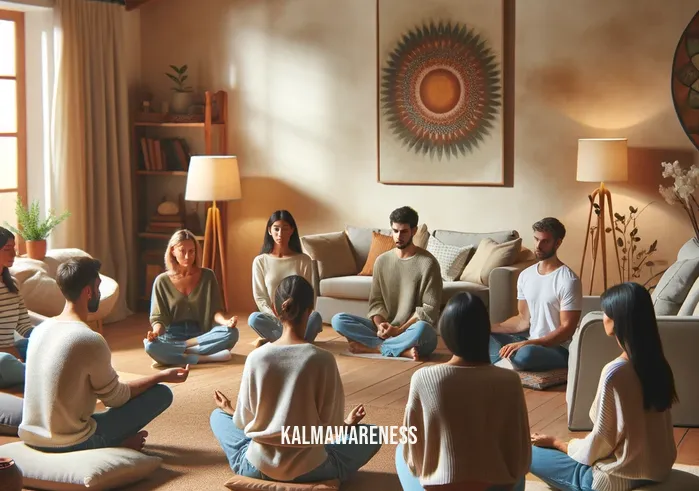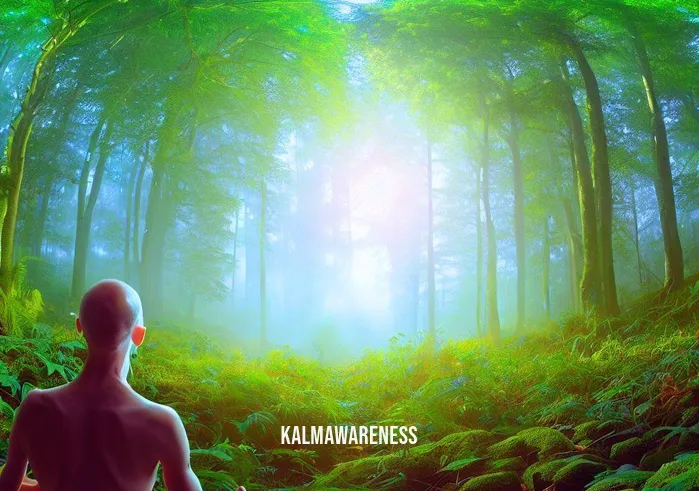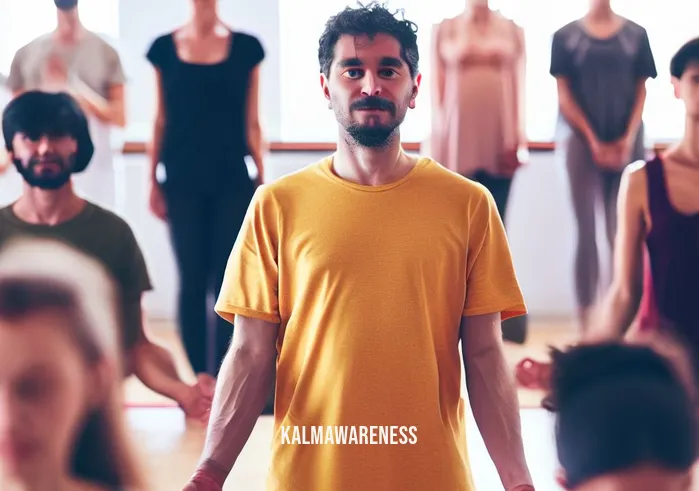How to Live Well with Chronic Pain and Illness: A Mindful Guide
Living with chronic pain or illness is not just a physical challenge but a mental and emotional one. Amidst the constant discomfort or even agony, it’s essential to find ways to cope, not just to exist but to thrive. The power of the mind and the spirit can significantly influence our experience of physical ailments. This guide aims to offer a comprehensive understanding of how mindfulness and related practices can help individuals not just survive but live well with chronic pain and illness. Here, we lay the foundation and overview for this topic, which will be delved into more deeply in subsequent segments.
The Power of Mindfulness in Coping
Mindfulness, at its core, is about being present. It’s about experiencing each moment as it comes without excessive judgment or distraction. For those with chronic ailments, the life is available only in the present moment. Mindfulness practices teach us to be in the here and now, which can help in diverting attention from pain or discomfort and focus on the beauty and possibilities of the present.
Ancient Wisdom and Modern Practices
Historically, various cultures have understood the power of the mind in dealing with physical challenges. For instance, ancient African meditation techniques were not just about spiritual growth but also about holistic well-being. Similarly, the mindful martial arts of East Asia highlighted the synergy between physical discipline and mental focus. These ancient wisdoms serve as a testament to the timeless effectiveness of mindfulness techniques in enhancing quality of life.
Integrating Mindfulness into Daily Life
One might wonder, with the busy schedules and ever-demanding modern lifestyle, how can one integrate mindfulness practices? The answer lies in the concept of micromeditating. It’s about finding pockets of time, even if just for a few minutes, to center oneself. Such practices can be as simple as focusing on one’s breath, indulging in meditation in motion, or immersing in activities like mindful hiking that combine physical activity with a meditative mindset.
Resources for the Journey
As we embark on this journey of understanding and integrating mindfulness into our lives, especially for those with chronic ailments, it’s crucial to equip ourselves with the right resources. Engaging in Penn mindfulness classes can provide structured learning. For younger audiences, mindfulness books for teens can be a valuable resource. And for those who prefer a more personal touch, seeking a meditation consultant might be the way forward.
The Role of Self-Love and Gratitude
In the journey to cope and thrive with chronic pain and illness, it’s fundamental to foster a sense of self-love and gratitude. Embracing oneself, flaws and all, can be reinforced by practices such as the gratitude yoga in Princeton. Embodying love for oneself becomes a powerful tool in this healing and coping process. As we move forward in subsequent chapters, we’ll explore deeper into the essence of self-love and how it intertwines with mindfulness.
In conclusion, living well with chronic pain and illness is not a distant dream but a very attainable reality. The path to this reality is paved with mindfulness, understanding, and a profound connection to one’s inner self. The journey may be challenging, but with the right tools and mindset, it can be transformative. Continue reading as we delve deeper into specific techniques, stories, and insights in the next chapter.

Embracing Mindful Habits for Chronic Wellness
When exploring how to live well with chronic pain and illness: a mindful guide, it’s essential to recognize the multifaceted approach required to enhance overall well-being. This chapter seeks to delve deeper into various practices, resources, and habits that can significantly aid individuals in their journey to holistic wellness.
Understanding Habitual Thinking and Chronic Pain
One’s mindset plays a pivotal role in the experience of chronic pain and illness. Habitual thinking refers to the recurrent and often automatic thought patterns we have. Recognizing these patterns and challenging negative or unhelpful thoughts can be instrumental in changing our pain experience.
Mindful Practices for Daily Relief
The beauty of mindfulness is its adaptability and relevance to various activities and moments throughout the day. Here are some practices that can seamlessly be integrated into daily routines:
Mindful Muscle: Mindful Muscle techniques involve being present and aware during physical activities. By focusing on each movement, one can often find relief and distraction from chronic pain.
Micro-meditating Moments: Even amidst busy schedules, taking short breaks to practice micromeditation can be immensely helpful.
Mindful Languages: Exploring mindfulness in diverse languages like mindfulness en español can be a fresh way to experience and understand these practices.
Meditative Stories: Meditation stories for students offer insightful narratives that can serve as metaphors or lessons in dealing with pain.
Renewed Mind Portals: Platforms like the renewed mind employee portal offer resources and tools tailored for professionals dealing with chronic pain.
Comprehensive Overview: Mindful Activities and Their Benefits
| Mindful Activity | Primary Benefit | Related Resource |
|---|---|---|
| Meditation in Motion | Enhances physical and mental coordination | Workshops, classes |
| Meditation for Menopause | Alleviates menopausal symptoms through relaxation | Guided meditation sessions |
| Gratitude Yoga | Fosters a sense of thankfulness and eases physical pain | Yoga studios in Princeton |
| Mindful Miracle | Builds resilience and adaptability in daily life | Books, online forums |
| Meditation Pleine Conscience | Offers relaxation in the French tradition | Bilingual meditation sessions |
This table serves as a snapshot of the myriad ways one can engage in mindful practices tailored to their unique needs and challenges.
Moving Forward with a Mindful Mindset
As we continue this journey of understanding and exploring how to live well with chronic pain and illness through a mindful lens, it becomes clear that the process is ongoing. The world of mindfulness is vast, filled with diverse practices, each offering its unique benefits.
A pivotal factor to remember is the inherent interconnectedness of the physical, mental, and emotional realms. By nurturing the mind and spirit, one can profoundly influence the experience of the body. As we look ahead, the subsequent chapters will provide deeper dives into specific techniques, stories, and practices to empower every individual on their journey to well-being.
Stay with us as we further unravel the transformative power of mindfulness in the context of chronic pain and illness in the next chapter.

Illuminating Hope: Stories of Resilience and Mindfulness
Living with chronic pain and illness can often feel like an uphill battle. However, many have discovered that the path to well-being is illuminated with hope, resilience, and mindfulness. This chapter dives into real-life stories and inspirational quotes to guide and uplift those on their journey to living well with chronic pain and illness.
Stories that Resonate
Martial Arts and Mindfulness: Jake, a 40-year-old martial artist, had been living with chronic back pain for over a decade. Rather than succumbing to despair, he turned to mindful martial arts. He realized that by channeling his energy mindfully, he could alleviate some of his pain and channel his mental focus to find peace amidst the discomfort.
Meditating in Nature: Sarah, diagnosed with a chronic respiratory illness, found solace in mindful hiking. For her, the beauty of nature combined with the rhythm of her breath provided moments of reprieve from her symptoms. She mentions, “Every step I take in nature is a step away from the constraints of my illness.”
Love from Within: Rosa, a woman in her 60s, learned the art of self-love after being diagnosed with rheumatoid arthritis. Through the guidance of loving your heart, she embraced practices that prioritized self-care and compassion.
Quotes to Inspire and Comfort
“The wound is the place where the light enters you.” – Rumi
- This quote emphasizes that challenges, like chronic pain and illness, can lead to deeper self-awareness and spiritual growth.
“Out of suffering have emerged the strongest souls; the most massive characters are seared with scars.” – Kahlil Gibran
- A reminder that our struggles, including living with chronic pain, can forge us into resilient and strong individuals.
“Remember, life is available only in the present moment.” – Thich Nhat Hanh
- Thich Nhat Hanh, a renowned mindfulness practitioner, emphasizes the power of being present despite our challenges.
“You either get bitter or you get better. It’s that simple. You either take what has been dealt to you and allow it to make you a better person, or you allow it to tear you down. The choice does not belong to fate, it belongs to you.” – Josh Shipp
- A testament to the power of choice and perspective when faced with chronic challenges.
Embracing the Journey Ahead
While chronic pain and illness might introduce unanticipated challenges in one’s life journey, they also present opportunities for growth, resilience, and deeper self-understanding. The stories and quotes shared here are but a few examples of countless individuals worldwide who’ve embraced mindfulness and hope to navigate their challenges.
In the next chapter, we’ll explore the diverse array of tools and resources that can further support this journey. The focus will be on equipping oneself with knowledge and practices to further the quest of how to live well with chronic pain and illness: a mindful guide. We invite you to continue reading and discovering.
@
Mindful Strategies: Understanding the Pillars of Wellness
Living with chronic pain and illness often feels like navigating through a maze. The journey requires patience, resilience, and knowledge. In this chapter, we’ll break down specific strategies and approaches that constitute the very foundation of how to live well with chronic pain and illness: a mindful guide. Utilizing a systematic format, let’s explore these concepts in detail.
Key Mindful Practices for Chronic Pain and Illness
Micromeditating: Short, focused meditation sessions can help manage pain and stress. Micromeditating offers a flexible approach suitable for those days when pain is more intense.
Ancient Techniques with Modern Relevance: Historically, many cultures have developed their unique methods of meditation. Drawing from ancient African meditation techniques, one can find peace and grounding in traditions passed down through generations.
Engaging in Movement Meditation: For those who find stillness challenging due to physical discomfort, meditation in motion can be a rewarding alternative, blending physical activity with mindfulness.
Mindfulness Resources for the Journey
Books: Consider exploring mindfulness books for teens. While they may be targeted at a younger audience, their simple and relatable content can be valuable to readers of all ages.
Classes: Engaging in structured learning can deepen your understanding. Consider enrolling in the Penn Mindfulness Class to delve into mindfulness practices under expert guidance.
Incorporate Mindful Activities: Explore activities like gratitude yoga that blend mindfulness with physical wellness.
Understanding Habitual Thought Patterns
One of the challenges faced by those with chronic conditions is confronting and reshaping habitual thought patterns. By understanding your habitual thinking definition, you can begin to identify, challenge, and transform potentially harmful patterns into more constructive ones.
Tapping into Resources
Professional Support: Engaging with a meditation consultant can offer personalized guidance tailored to your unique needs.
Incorporating Daily Self-Care: Using resources such as the renewed mind employee portal, individuals can access tools and strategies to incorporate mindfulness and self-care into their daily routine.
Challenges and How to Overcome Them
Language Barriers: Mindfulness resources are available in multiple languages, including resources that teach mindful practices en español.
Physical Limitations: Remember, mindfulness is not just about seated meditation. Find practices that accommodate your body, whether it’s seated, lying down, or even walking.
In our journey so far, we’ve explored the principles, heard inspirational stories, and now have a clearer breakdown of strategies to live well with chronic pain and illness. As we approach our final chapter, we’ll reflect on the collective wisdom shared and look at actionable steps to embody these learnings. Join us in the next chapter as we conclude this mindful guide.
@
Embracing the Mindful Path: Reflections and Hope
As we draw this journey to a close, let’s pause and reflect on the powerful insights shared on how to live well with chronic pain and illness: a mindful guide. Like the gentle waves of the ocean or the ever-changing patterns of the clouds, our life is in constant flux, presenting both challenges and opportunities. Through the wisdom of mindfulness, we’ve discovered tools and strategies to navigate this complex tapestry with grace and resilience.
Key Takeaways
Mindful Awareness: By tapping into resources like the mindful muscle, we can cultivate a heightened sense of presence, allowing us to respond rather than react to pain.
Cultural Wisdom: From mindful martial arts to the tranquility of mindful hiking, various cultures offer a wealth of knowledge in addressing chronic pain through mindfulness.
Living in the Now: As emphasized in the teaching that “life is available only in the present moment”, it’s vital to embrace the here and now, regardless of physical challenges.
Self-compassion and Care: With practices like loving your heart, we’ve seen the transformative power of self-compassion, reminding us to treat ourselves with the kindness we’d offer to a dear friend.
Moving Forward with Hope
No journey is without its fair share of bumps and twists. Yet, each step taken on this mindful path has illuminated the possibility of a life filled with more peace, understanding, and joy, even amidst chronic pain. As the old adage goes, “It’s not what happens to you, but how you react to it that matters.” This guide has been a testament to that truth.
Thank You, Dear Reader
Your commitment to exploring this guide, to bettering your life and the lives of those around you, is genuinely commendable. We thank you for embarking on this journey with us. The ripples of the insights you’ve gained here can extend far beyond the present, impacting not just your life but those you touch.
A Call to Dive Deeper
If these chapters have kindled a spark of curiosity, we invite you to delve even deeper. Explore other enriching content in our magazine, revisit previous sections to reinforce your understanding, or engage in our community discussions. Together, let’s continue unraveling the myriad layers of well-being, mindfulness, and living fully, even in the face of adversity.
In the pages of future editions and within the vast repository of our online resources, you’ll find more guides, stories, and tools waiting to be discovered. Each step, each story, each breath is an invitation to live more mindfully.
Until our paths cross again, remember: The journey is the destination. Embrace each moment, and may you find peace, strength, and joy in every step.




